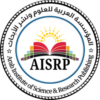Production of asparaginase from Bacillus licheniformis using agro-industrial residues as carbon and nitrogen sources
Vivian Daifallah
General Authority for Biotechnology | Molecular Biology Laboratory | Damascus | Syria
Abstract: The feasibility of using a number of agro-industrial residues as substrates was studied for the production of the asparaginase from Bacillus licheniformis isolated from the local soil. Glucose-rich residues were used as carbon sources (grape peels, apple peels, carrot peels, potato peels, corn waste, sugarcane bagasse, banana peels), and were added to the fermentation medium at different concentrations (1, 1.5, 2, 2.5, 3%).
Nitrogen-rich residues (soybean meal, bean peels, chickpea cooking water, and whey) were also used with the concentrations of 1, 2, 3, 4, and 5%. The enzyme was produced by submerged cultures, and the enzymatic activity of the produced enzyme was estimated to determine the optimal composition of the fermentation medium.
The results showed the superiority of grape peels (3%) as a carbon source, and soybean meal (5%) as a nitrogen source compared to other residues. The activity of the enzyme produced by the aforementioned medium reached 2595.30 µmol/mL, and the specific activity reached 1089.1 units/mg.
Keywords: Asparaginase, Ammonia Determination, Agro-industrial Residues, Sugarcane bagasse, Banana peels , Bacillus licheniformis.

إنتاج الأسبارجيناز من بكتيريا Bacillus licheniformis باستخدام المخلفات الزراعية- الصناعية كمصدر للكربون والنتروجين
فيفيان ضيف الله
الهيئة العامة للتقانة الحيوية | مخبر البيولوجية الجزيئية | دمشق | سوريا
كما استخدمت المخلفات الغنية بالنيتروجين (كسبة فول الصويا، قشور الفول، ماء الحمص المسلوق، الشرش) وفق التراكيز 1، 2، 3، 4، 5%. استخدمت طريقة المزارع المغمورة لإنتاج الأنزيم، وقُدِّرت الفعالية الأنزيمية للأنزيم المُنتَج لتحديد التركيب الأمثل لوسط التخمير. وقد أظهرت النتائج تفوق قشور العنب (بنسبة إضافة 3%) كمصدر للكربون، وكسبة فول الصويا (بنسبة إضافة 5%) كمصدر للنيتروجين بالمقارنة مع المخلفات النباتية الأخرى. وقد بلغت فعالية الأنزيم المنتج بالتخمير باستخدام الوسط وفق التركيب آنف الذكر 2595.30 ميكرومول/مل كما بلغت الفعالية النوعية للأنزيم 1089.1 وحدة/مغ.
الكلمات المفتاحية: أسبارجيناز، تقدير الأمونيا، مخلفات زراعية-صناعية، مخلفات عصر قصب السكر، قشور الموز ، Bacillus licheniformis.